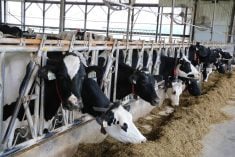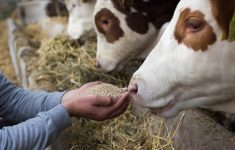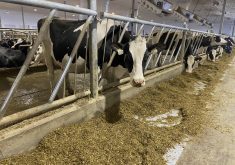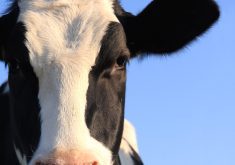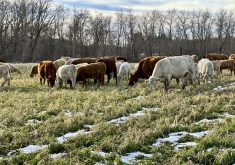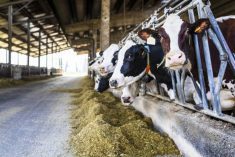Glacier FarmMedia – Calgary-based feed additive maker CBS Bio Platforms is trumpeting the feed efficiency benefits of its new Optimax E enzyme-based biocatalyst, at the same time as the dairy industry is looking for tools to reach its stated goals on carbon neutrality.
The product has also garnered interest for its potential impact on solids-not-fat (SNF) ratios.
Why it matters: If similar results to the Mexican trial can be achieved on commercial dairies in Canada, the product has potential impact on dairy farm profits.
Read Also

Journal pulls long-cited glyphosate study for ethics violations
The journal Regulatory Toxicology and Pharmacology has retracted a 2000 Monsanto-linked glyphosate review, drawing new scrutiny as Bayer faces mounting legal pressure.
The biocatalyst showed promising results in a 24-day trial in a 380-cow Holstein herd in Mexico. The feed in that study was a total mixed ration akin to what herds in Canada and the United States would be fed.
“These are very exciting results that come at an opportune time,” said CBS Bio Platforms nutrition and technical service manager Sabrina Zettell, in a July 19 news release.
“The results show biocatalyst technology has excellent potential as a tool that dairy farms can rely upon to optimize production efficiency and move toward net zero goals.”
In a later interview, Zettell said Optimax E is approved for use in Canada, the U.S., Mexico and parts of Asia. The company says early adopters are adding it to dairy rations in Ontario but declined to disclose which farms.
Zettell said Optimax E, which has been in development for approximately six years, is primarily a fibrolytic enzyme typically present in fungi, bacteria and protozoans and known for aiding in the decomposition of cellulose.
She stressed that the product is also effective in speeding digestion of starches and non-polysaccharide carbohydrates.
“The initial trial work was done with the University of Manitoba and later (U.S.-based) Cumberland Valley and Honeyland Ag,” she said. “As product development continued, we utilized the University of Guelph as well.”
The recent on-farm trial in Mexico saw 20 grams per day of Optimax E added for 24 days to the ration of 380 Holsteins, which were averaging 175 days in milk and being milked three times per day, on a ration of corn silage and alfalfa haylage.
Cows were monitored for lactation performance, milk components and dry matter intake, with efficiency and return on investment calculated based on those numbers.
“The study utilized pre-trial performance data [from the period leading up to the feeding trial] as control data,” the news release said. “The biocatalyst treatment was then removed from the diet and performance data was collected for an additional 24-day post-trial period.”
Zettell says the product is “easy to use, either in a manufactured pellet or mash supplement from a feed mill or directly mixed into the TMR on farm. It’s a dry product, easy to handle and store,” with possible use as a top-dress or mixed in the ration.
Results from the trial showed increases in dry matter intake, milk production and efficiency on a fat-corrected milk basis. The herd averaged more than two additional litres of milk per head per day after supplementation, and fat-corrected milk went from 35.5 litres to 37.58.
“When feed efficiency was calculated as litres of milk per kilogram of dry matter intake, this too was improved significantly, both during and after the trial period,” Zettell said in a YouTube video posted to the CBS Bio Platforms website.
Other takeaways
Two other trial results stand out.
“Importantly, these improvements were not only achieved during the treatment period but also carried over during the post-trial period,” the news release said. “In fact, milk production and efficiency were not only maintained but continued to improve post-treatment.”
Zettell said this may be due “to the impact of the treatment in positively altering the rumen microbial population.”
In a company YouTube video, she highlighted the changes in milk components observed during the trial.
“Fat per cent was increased, protein per cent was decreased, and overall lactose remained unchanged,” she reported.
“Solids-not-fat ratio, therefore, was also significantly improved. And for provinces where this is a concern, this could be a tool to help manage high SNF in some of those herds.”
CBS Bio Platforms aims to expand the use of Optimax E beyond dairy cattle.
“A recent trial just finished on meat lambs and we are currently reviewing the data,” Zettell told Farmtario. “I’m hopeful there will be organic approval (for the product) in the near future as it would drastically help improve feed efficiency in situations where (options for) ingredients are limited.”
– This article was originally published at Farmtario.



